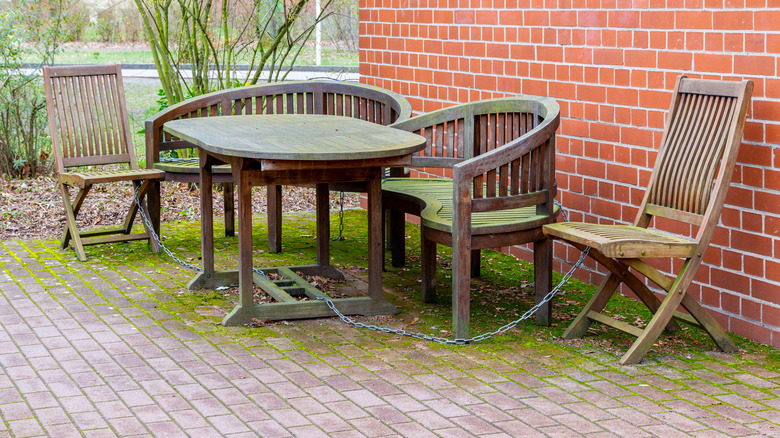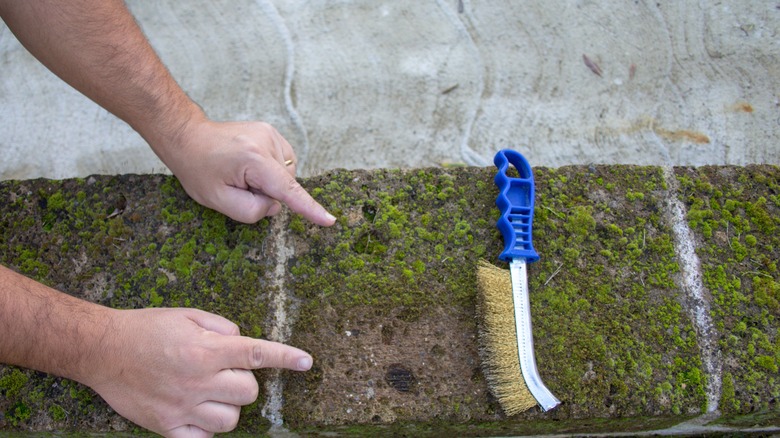Give Your Exterior Brick A Much-Needed Clean With A Handy Item You Already Own
If you have a brick home, you probably already know that the growth of plants along the brick face — such as moss or ivy — can be more destructive than attractive. We've all seen the picturesque old buildings covered with a stately phalanx of ivy, but chances are that handsome flora has compromised the structural integrity of the building. To prevent this, it's best to stop the growth before it becomes too entrenched in the brick. A power washer is a great tool for this purpose if the pressure is kept fairly low. They can get quite expensive, though, and are not recommended on older brick. Instead, you can remove moss and such by washing the brick with nothing more than water, bleach, a sponge, and a scrub brush, most of which you probably already have at home.
Moss and mildew both start at the microscopic level, so the best preventative measure is to regularly clean the brick — especially in areas without direct sunlight, where moss and mildew are apt to grow — before either takes hold. Sunny areas not prone to these tiny infestations can be cleaned once a year to maintain the fresh look of the brick, but the perennially shaded areas of your home should be cleaned every six months. Moreover, the best time to clean is on a dry, overcast day when the temperature is around 50 degrees Fahrenheit. This will ensure your cleaning agents work properly and your brick has time to dry.
How to clean your exterior brick with bleach
It's important to clean the brick face on the sides of your house that sit in the shade regularly to prevent this growth and protect the structure from irrevocable damage. To do this, mix 1 gallon of water with 1 cup of household bleach. Wearing protective gloves, dip a sponge into the bleach water and dab the saturated sponge against the brick. If you have painted brick, test the solution in a small, hidden area first to make sure the color isn't affected, or use a baking soda and vinegar alternative. After the bleach water has been applied for about 15 minutes, you can scrub any growth off of the bricks with a scrub brush.
The scrub brush you use should be composed of nylon or natural bristles, which are less prone to break off and embed pieces in the brick. Refrain from using a wire-bristle brush, as tiny shavings of the metal can break away and be left within the grooves of the bricks. Over time, these metal shavings are exposed to moisture and will rust within the wall, staining it and further compromising the brick. However, with a bit of bleach and a natural or synthetic bristle brush, your exterior brick can be kept in prime condition for decades.

